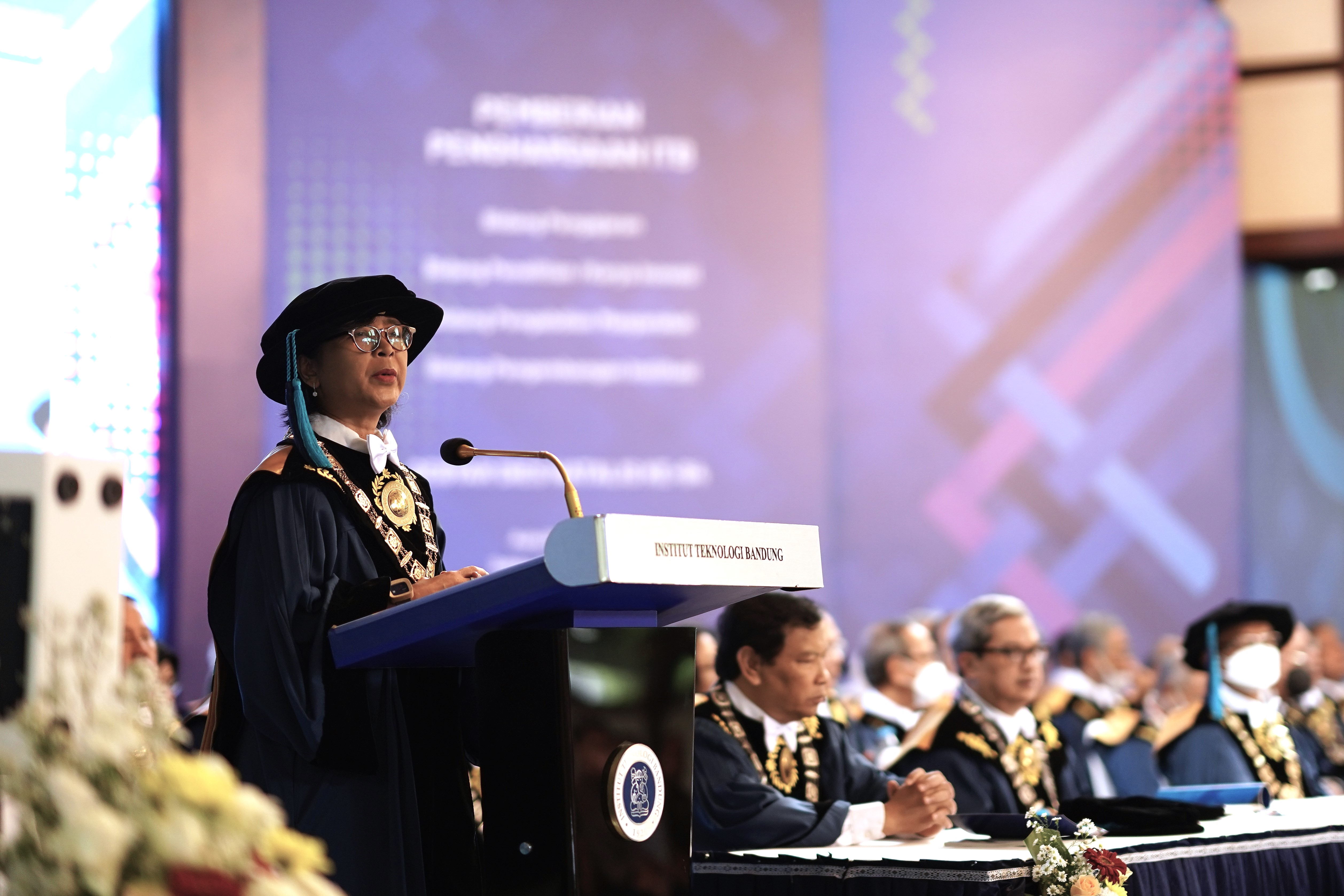ITB Professor’s Forum: Future Developments and Opportunities on Construction Engineering and Technology
By M. Naufal Hafizh, S.S.
Editor M. Naufal Hafizh, S.S.
BANDUNG, itb.ac.id - A Scientific Oration by ITB Professors Forum was held at the West Hall Building of ITB Ganesha Campus, Saturday (17/2/2024). A total of six ITB Professors from five different faculties delivered their scientific research, with one of them being Prof. Ir. Biemo Woerjanto Soemardi, M.Sc., Ph.D.
During the event, Prof. Biemo delivered his oration titled "Indonesian Construction Engineering and Technology: Future Developments and Opportunities".
Prof. Biemo opened his speech by reminding the audience of the history of the ITB West Hall, going back as far as 103 years ago. Even though it was built hundreds of years ago, it is still in very good condition. This is due to the well-off construction in the West Hall.
The earliest evidence of the first ever construction activities were found in Turkey, Greece and they were construction of Roman roads eleven thousand years ago, using construction techniques still known to this day. In Indonesia, the contribution of construction activities in regards to the economic sector is relatively high based on previous known graphics. In fact, the numbers are adequately high enough to replace the traditional sector.
"As of right now, the construction industry is heading towards a better future," said Prof. Biemo.
According to him, opportunities in the sector will continue to grow. These opportunities include a shift in work patterns from a traditional design build to an integrated project management. Furthermore, there has been a lot of new construction work started, not to mention a new modular construction technology ready to use.
Based on the history of Indonesian construction development, it is believed that there were human efforts involved in the construction of Muara Takus Temple (500 - 700 AD) and Borobudur Temple (770 AD). There were similarities in both constructions, namely stone stacking techniques and the imagery found on the stone. The second historical journey jumps back on how construction developed in the colonial era, especially railroad construction by the Netherlands. In addition to that, the Netherlands also inherited irrigation technology.
The nationalization of Dutch construction companies with certain specialities became the forerunner of the development of public infrastructure and is the foundation for modern construction technology. Prof. Biemo finds it interesting that in the early days of independence, the executors of public infractructure development were local construction companies that had been nationalized when the construction was still assisted by foreign experts.
The milestone continued after the reformation era when the private sector began to flourish, in terms of commercial and residential development, design and build integration, foreign private companies, increased mastery and utilization of technology. An example that can be seen today is the high-speed rail train funded by Indonesia and China.
Learning history and seeing the current positions of construction can help us look ahead. Innovation, like the Sosrobahu barrier-free rotary platform (LPBH), the structure of the soil pile bamboo mattress, and the interspelling tunnel method can be an example of newly established construction. For Prof. Biemo, he has been using virtual reality since 1997.
For the time being, Prof. Biemo alongside a doctoral student are currently working on the application of landscape construction technology. This approach will be carried out by big data analysis to get a clear image on the direction of the projection development. Currently, there are several technologies that can be applied such as cyber technology and internet smartphones.
The direction of Engineering and Construction Technology has been developed in various countries with a particular focus, as construction goes way above managing resources. Engineering and technology leads to a more effective and efficient construction management.
"Leading in construction development should always be available in ITB because of past experience and networks, therefore ITB deserves to be a pioneer for the development of engineering science for Indonesia," stated Prof. Biemo.
Reporter: Yohana Aprilianna (Urban and Regional Planning, 2021)
Translator: Kezia Hosana
Editor: Hanna Daniela Ayu (Aerospace Engineering, 2021)

.jpg)
.jpg)
.jpg)
.jpg)
.png)


